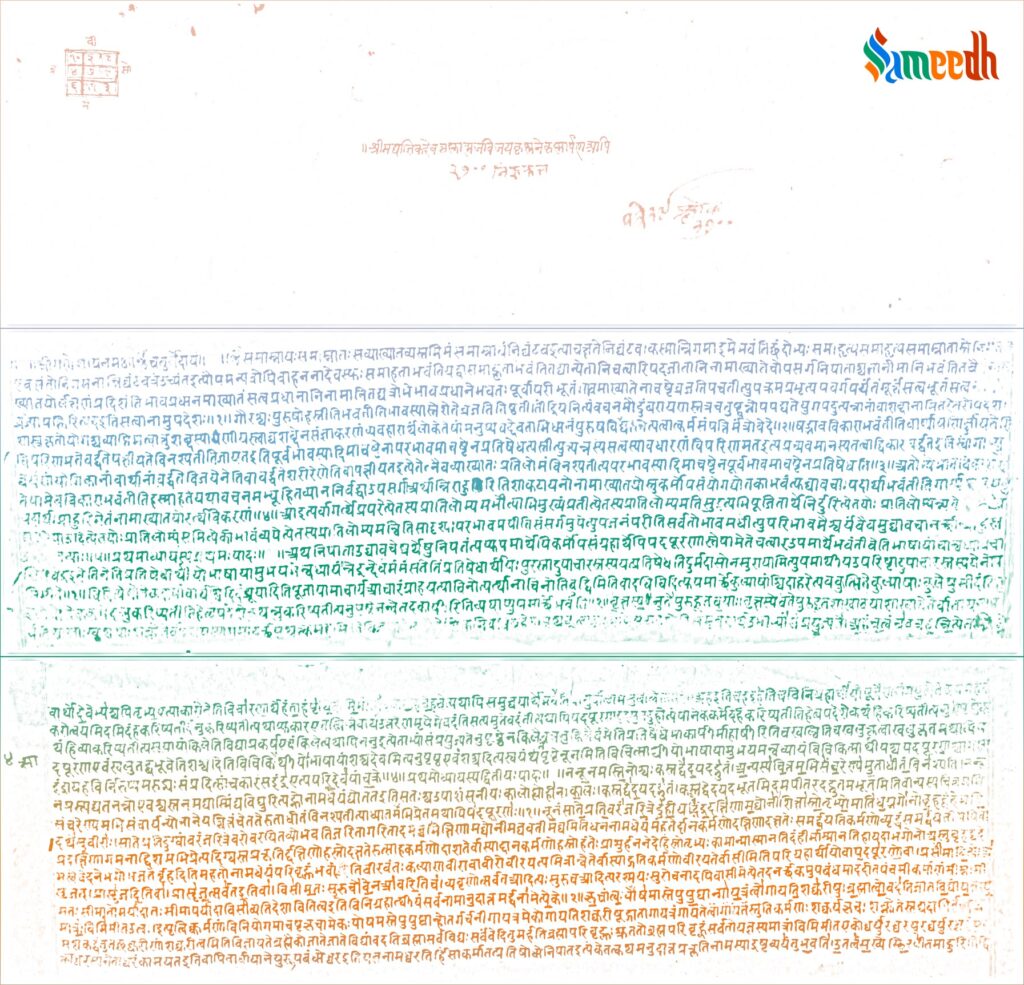This blogpost helps the reader understand how a discipline was created to understand the Vedas better.

The opening pages of Yaska’s Nirukta Vedanga text; Image Source: Ms Sarah Welch
ORIGIN
One of the Vedangas
The science of Nirukta is one of the six ancillary fields or Vedangas created to comprehend and explain the wisdom and obscure knowledge of the Vedas better. The field was conceptualised by one of the most revered scholars of the ancient times, Yaska. He designed this field to explain every difficult word of the language Sanskrit present in the Vedas. He curated an easier understanding of the language, grammar, and semantics present in the text of the Vedas. His work culminated into the whole field that is known as Nirukta. It was aimed at explaining how the words are used and formed to convey the knowledge better.
This discipline forms one of the most important foundations of comprehending the wisdom of the Vedas.
ETYMOLOGY
Designed To Explain
The word Nirukta finds its origin in the Sanskrit word, ‘Niruktih’ which implies explanation of words. The discipline of Nirukta is divided into three important parts. The first part is a compilation of synonyms and is called Naighantuka. The second part is called Naigama which contains all the words which are present in the Vedas. The third part of Nirukta is called Daiavata which compiles all the words related to Daivas or deities of the Hindu religion and the sacrifices made. This discipline basically breaks down the science and grammar needed to understand the knowledge and text of the Vedas. Nirukta compiles all the difficult and obscure words contained in the Vedas and helps the reader understand the knowledge better.
SIGNIFICANCE
To Elaborate the Vedas
Yaska, the scholar created this discipline to emphasise on the importance of understanding the Vedas and not just memorising it. According to Yaska, the Rigveda can be understood in mainly three different perspectives. Based on these different perspectives he created this discipline and divided the text of Nirukta in different parts. According to him, Rigveda can be understood through religious rituals, deities and the soul.
ANCIENT PRACTICE
Since the 2nd Millennium BC
This discipline of Nirukta was created during the ancient times in the latter part of the 2nd millennium BC. It was a revolutionary way of looking into the meaning of the Vedas and giving a proper semantic explanation of different words present in the Vedas. In a very proper and lucid manner, Yaska explains different phrases and words present in the Nirukta. He explained different concepts of Speech and grammar that helped people understand how the words and sentences were constructed in the text of Vedas.
MODERN USAGE
A Simpler Meaning
In the most simplistic terms, Yaska explained that new words are formed to explain different actions. He believed that the understanding of context is very important in understanding the meaning of words. The Vedas can be understood by properly understanding the context and the whole situation every text and words were based on. This clear understanding of the different words and context will allow us to properly comprehend the Vedas
Nirukta, simplified wisdom
The knowledge and eternal wisdom of the Vedas would not have been useful if the field of Nirukta was not established. To understand the essence of wisdom, we need to understand the discipline of Nirukta.
To read more about such disciplines, keep reading blogposts on Sameedh.